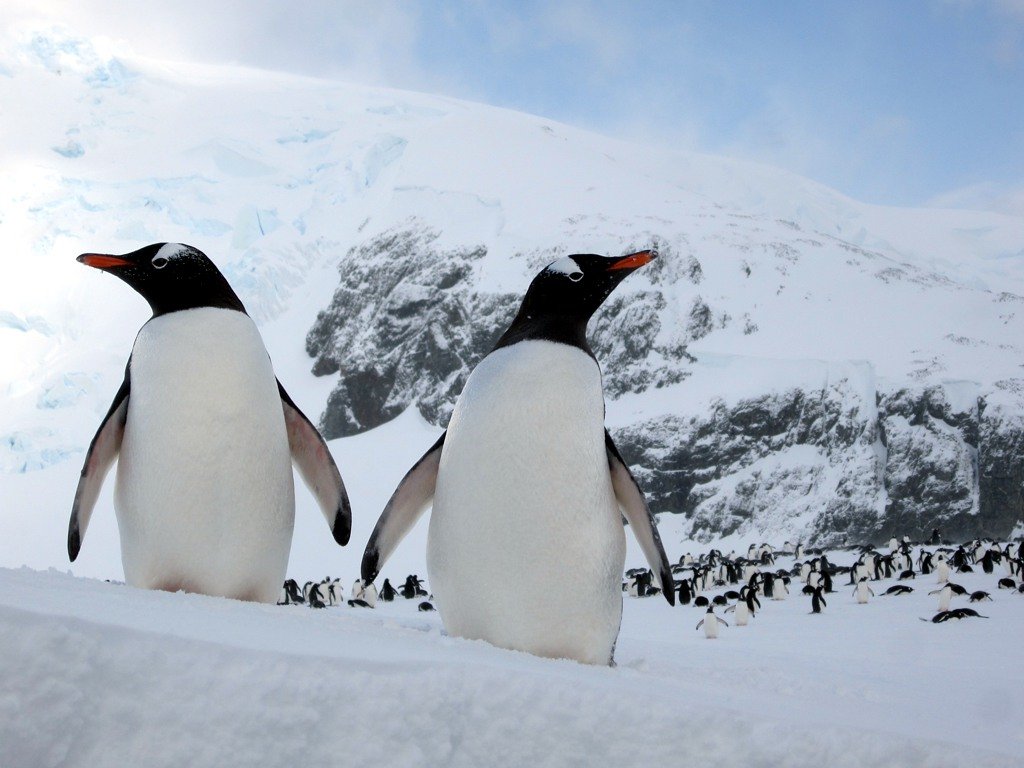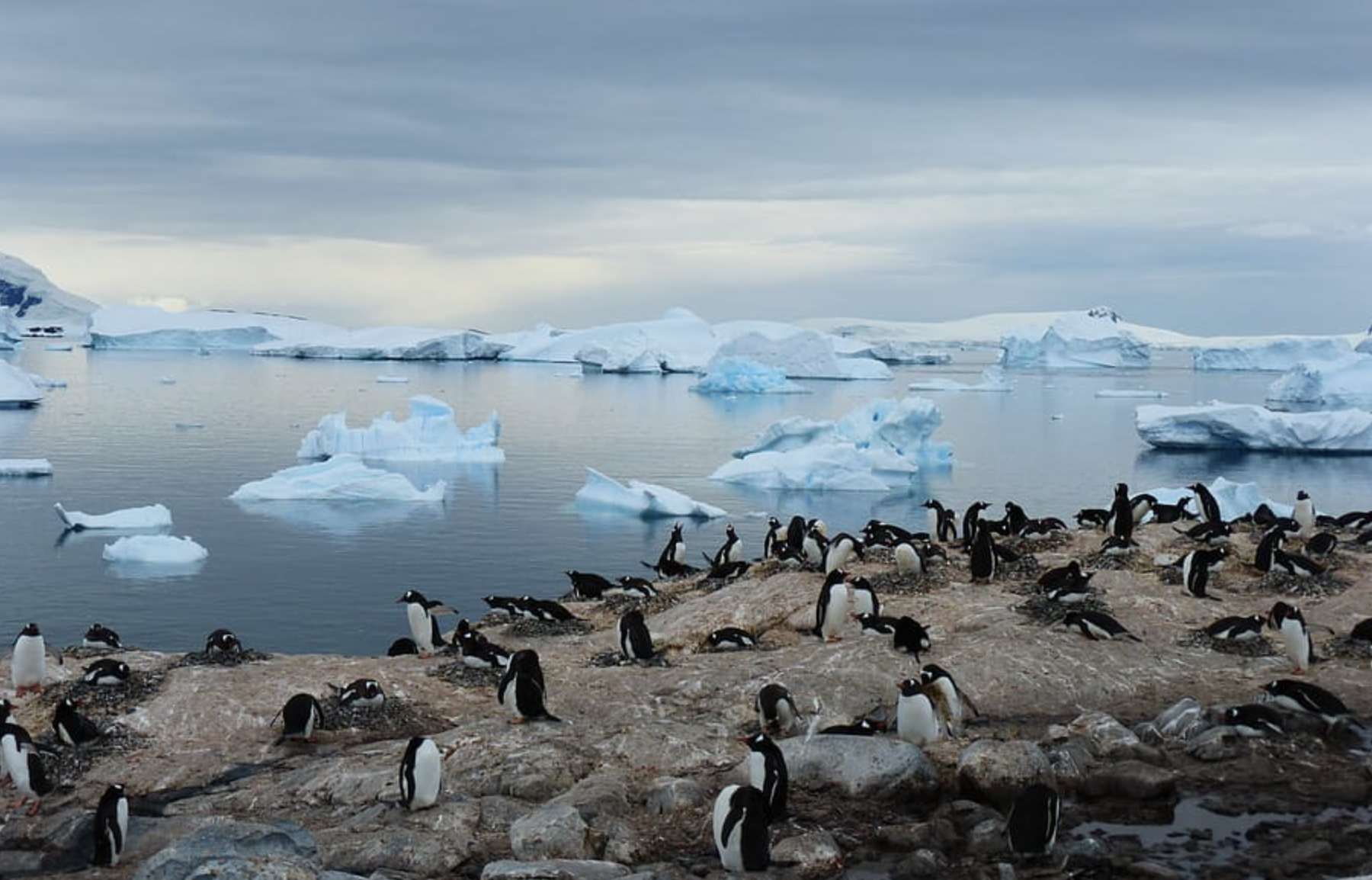Penguins and glaciers and icebergs, oh my! Pro tips and incredible sights to see in the Antarctic, including Drake Passage, Graham Land, Port Lockroy, Palmer Station, Deception Island, Half Moon Island and Paradise Bay.
A cruise through the Antarctic isn’t for the faint of heart — but could be the trip of a lifetime.
If you’re an adventure seeker, the Antarctic Peninsula is the ultimate extreme destination. The Antarctic Peninsula, also known as Graham Land or Palmer Peninsula, is the northernmost part of Antarctica and part of the larger West Antarctic Peninsula. It lies about 600 miles south of South America.
The landscape is mountainous, and there are numerous volcanoes in the region. You can expect to see a wide range of wildlife, including emperor penguins, killer whales and seals.
“Altitude sickness might not be something you think of when visiting the Antarctic, but the highest point is 2.5 miles above sea level.”
Taking an Antarctic Peninsula cruise is the best way to explore this remote, inhospitable region.
This isn’t your typical cruise, that’s for sure!
Essential Tips for an Antarctic Peninsula Cruise
Find the right time to go.
The best time to take a cruise to the Antarctic Peninsula is during the austral summer, which runs from November to March. During this period, the weather is more stable and the days are longer.
Sunsets can last up to three hours — making for some spectacular photographs.
Plus, you’re more likely to see wildlife, as animals are more active during the summer. The first penguin chicks hatch in mid-December, so if you want to catch a glimpse of them, this is the ideal time to go. The whales also begin to arrive in mid-December, and there are plenty of them in January. The ice thins a bit, too, allowing tourists to explore farther south.
A luxury cruise ship plies the ice-filled water of the Antarctic.
Choose the right cruise.
Luxury cruise ships are popular as they offer a variety of itineraries and amenities such as all-suite accommodations, fine dining and experienced guides. However, don’t just settle for any cruise. Conduct ample research to decide if a large or small boat is more suitable for your needs.
A top factor to consider when choosing an Antarctic Peninsula cruise is your budget. You should decide first how much you’re willing to spend. You don’t want to go too high and break the bank, but you also don’t want to go too low and risk a subpar experience. With these criteria in mind, you can narrow down your options and find a cruise that best fits your budget and interests.
Pack properly.
The Antarctic Peninsula is cold and windy, so it’s essential to pack the right clothes for the trip. Bring lots of layers and wear waterproof winter gear.
Don’t forget sun protection, as the sun can be very strong even during the cold season.
Bring several pairs of gloves, a hat, a scarf and sunglasses to protect yourself from the elements. Ensure your clothing is comfortable and non-bulky so you can easily move around during shore visits.
Finally, if you’re an amateur photographer, bring enough memory cards and batteries for your camera.
Pro tip: Pack a power strip, as the cabins on cruise ships usually have limited electrical outlets.
The roughest stretch of water is the Drake Passage — one of the most turbulent areas in the world.
Prepare for rough seas.
Be ready to face the unique challenges of sea travel, including:
The Drake crossing: To reach the peninsula, your cruise ship will cross the Drake Passage, where the Atlantic and Pacific Oceans meet. This is one of the roughest stretches of sea in the world. So you never know if you’re going to experience the turbulent “Drake shake” or the tranquil “Drake lake.” I recommend contacting your doctor for any advice before you go and packing enough anti-seasickness medication for this stretch.
Altitude sickness: It might not be something you think of, but the highest point in Antarctica is 2.5 miles (over 4,000 meters) above sea level. On top of that, the average temperature in summer is around -13°F. Drier air, less oxygen, intense cold and harsh winds can trigger altitude sickness. The best thing to do is to drink lots of water to keep yourself hydrated.
Know the Antarctic regulations.
To minimize environmental impact on the peninsula, the cruise industry participates in detailed environmental assessments. They also must obey international maritime laws and coordinate itineraries through pre-season planning.
While in the Antarctic Peninsula, you have to follow International Association of Antarctica Tour Operators (IAATO) guidelines:
Protect the wildlife.
Respect restrictions in protected areas.
Keep the peninsula pristine.
Respect scientific research stations.
Thanks to the plays of light in the Antarctic, you can end up with some gorgeous photos.
Photographing the Antarctic Peninsula
There’s no shortage of picturesque views in the Antarctic Peninsula. Here are my tips to capture spectacular photos:
During the polar summer, from November to February, the sun stays above the horizon and never sets — a phenomenon known as the midnight sun. Take advantage of the unusual plays of light to take pictures of the same features from different angles and at different times of day.
To capture more focused and vibrant photos, use the color contrast between land and sea. The turquoise water will provide an eye-catching backdrop for pictures with icebergs and wildlife.
You don’t want your camera to freeze during the expedition, so keep it warm in an insulated case.
For the brave, there are outdoor activities on the Antarctic Peninsula, including camping.
Adventure Activities on an Antarctic Peninsula Cruise
Here are some activities to look forward to on the Antarctic Peninsula:
Kayaking: Kayaks are a great way to explore the nearby glaciers and islands up close and personal. Just make sure there are lifejackets and drysuits for this adventure.
Believe it or not, diving is an option in the Antarctic.
Diving: For certified divers, you can go 20 meters beneath the surface of the icy water. That should be deep enough to see the fascinating sea life. Whether you can dive largely depends on the weather conditions.
Camping: Camp overnight in Antarctica under the stars for a once-in-a-lifetime experience. Just be sure to bring thermal underwear, breathable down jackets, turtlenecks, thick socks, and thermal under-gloves or warm mittens.
Hiking and mountaineering: Take guided hikes to explore some of the most stunning landscapes in the world. For experienced climbers, there are also challenging mountains to scale. Pack a pair of sturdy boots with rigid soles. Your tour operator will provide climbing gear, such as ropes.
Let’s face it: Penguins, like these gentoos, are a big draw of this region.
Sights to See on an Antarctic Peninsula Cruise
Landscapes and Wildlife
Some of the natural wonders to look forward to seeing in Antarctica include:
Unique landscapes: There are many volcanic beaches, frozen tundras and ice caves to explore. Also, melting snow exposes a rugged mountain chain that’s habitat for interesting plant life and invertebrates.
In addition to penguins, look out for seals, whales and other seabirds.
Wildlife: The Antarctic Peninsula has numerous wildlife species, including majestic whales and albatrosses and other seabirds. You’re sure to see different types of penguins, including the gentoo, chinstrap and Adélie penguins, as well as crabeater, leopard and Ross seals.
Neko Harbor is a good spot to try to catch a calving glacier as it sheds massive chunks of ice.
Glaciers: Witness the beauty of massive glaciers, from those towering above Lemaire Channel to the calving ones in Neko Harbor, which shed massive chunks as they go through valleys and deep fjords. Those pieces that have broken off? We call them icebergs.
Lemaire Channel
Giant icebergs: The Antarctic Peninsula is home to some of the world’s largest and most spectacular icebergs. These floating giants are awe-inspiring sights not to be missed.
Paradise Bay Research Station
Must-Visit Locations on an Antarctic Peninsula Cruise
Deception Island
First discovered by seal hunters in 1820, the island was named for the way it deceived explorers — both by its concealed entry point, called Neptune’s Passage, and by its seemingly safe harbor, Port Foster, which sits within an active volcano. The harbor is actually a caldera, where the top of the volcano collapsed and gives the island its ringlike shape.
More than 50% of the island is covered by thick glaciers and is home to various wildlife species. The harbor and its black sand beaches are popular destinations for tourists and scientists alike. There are also hot springs, where visitors can take a dip in the 98.6ºF water.
Half Moon Island
Half Moon Island is home to many penguins, seals and seabird species. Part of the South Shetland Islands, Half Moon boasts incredible views made even more spectacular by its crescent shape.
Paradise Bay
Paradise Bay is a popular cruise ship destination and one of the two main Antarctic ports. It’s rich in wildlife, including penguins, seals and whales. It is also home to a research station where visitors can learn more about the Antarctic environment. On a clear day, you can see the snow-covered peaks of Adelaide Island in the distance.
Historical Sites
Visit abandoned research stations, such as Palmer Station and Port Lockroy, to learn about the history of human exploration and habitation in Antarctica.
These sites offer a fascinating glimpse into the past, with artifacts and photographs from many decades ago providing insight into what it was like to be a scientist in the Antarctic.
Breathtaking Sunrises and Sunsets
Finally, don’t miss the breathtaking sunrises and sunsets in Antarctica. Get up early to catch the first light of dawn and watch as the sky changes colors from pastel shades to deep orange-red.
At night, witness the mesmerizing beauty of the stars twinkling above the icy landscape. It’s an experience you’ll never forget! –Kayla Gallocher
The white of icebergs and glaciers contrast sharply with the beautiful blues and purples of the sky and water.

































